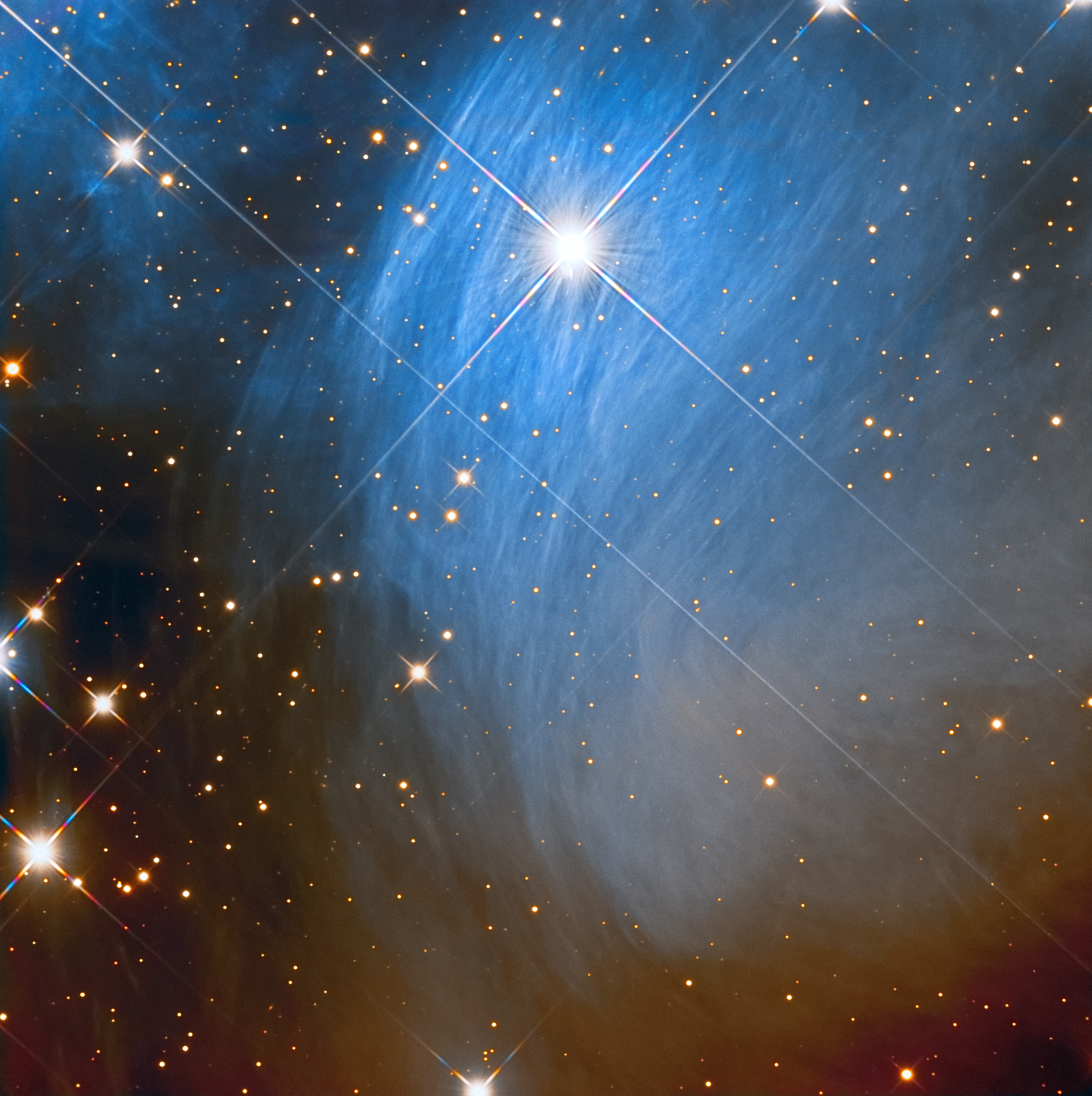
NGC 1977: Blue Reflection Nebula in Orion
Credit: Anglo-Australian Telescope photograph by David Malin
Copyright: Anglo-Australian Telescope Board
Credit: Anglo-Australian Telescope photograph by David Malin
Copyright: Anglo-Australian Telescope Board

Merope's Reflection Nebula
Image Credit & Copyright: Leonardo Orazi
Image Credit & Copyright: Leonardo Orazi
Reflection nebulae do just what they name implies: they reflect light. When a star is off to the side of the nebula, as seen from Earth, the nebula will reflect the bluer light (i.e. the shorter wavelengths) towards Earth, and the nebula will appear bluish in color. The reason why the bluer light is reflected and not the redder light is the wavelengths. The gas and dust particles are small enough that the blue light will interact with them and be reflected while the redder light, on average, will just pass by the dust and gas.
While the blue light is reflected, we know the red light passes through. This leads to another interesting phenomenon: reflection nebula can actual cause a star to appear redder than it really is. This is called stellar reddening.
No comments:
Post a Comment